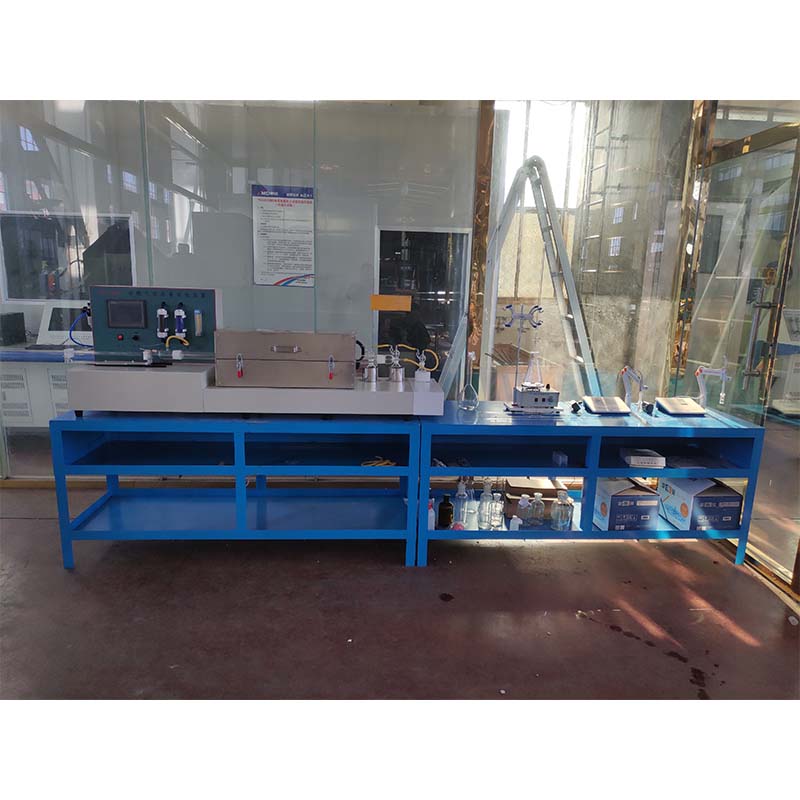clamps for tensile testers
Clamps for Tensile Testers Essential Tools for Material Testing
In the realm of material testing, the tensile strength of materials is one of the most critical properties to evaluate. Tensile testers are precision machines that apply tensile forces to a sample until it fractures, allowing us to assess important characteristics such as yield strength, ultimate tensile strength, elongation, and reduction of area. However, the effectiveness of tensile testing largely hinges on the quality and design of the clamps used to hold the specimen securely during the test.
The Importance of Clamps
Clamps are integral components of tensile testers. They hold the test specimen in place while the machine exerts force. Proper clamping is vital to ensure that the load is uniformly distributed across the material, which prevents premature failures that can lead to inaccurate results. Poorly designed or improperly adjusted clamps can introduce stress concentrations or allow slippage, compromising the integrity of the test.
Types of Clamps
There are various types of clamps used in tensile testers, each designed to accommodate different materials, geometries, and testing requirements
1. Wedge Clamps These clamps use a wedge mechanism to grip the material. When the specimen is placed into the clamp and force is applied, the wedge engages and tightens, ensuring a secure grip. Wedge clamps are favored for their ease of use and ability to hold various cross-sectional shapes.
2. Grip Clamps Typically used for standard sized specimens, grip clamps are designed to hold the specimen firmly without translating force through the material itself. These clamps often feature rubber or textured surfaces to enhance friction and prevent slippage.
3. Vise-type Clamps Similar to traditional vices, these clamps use a screw mechanism to tighten around the specimen. They provide a strong grip and can accommodate a range of specimen sizes. However, care must be taken to ensure that the material is not damaged by excessive clamping force.
clamps for tensile testers

4. Pneumatic or Hydraulic Grippers For high-volume testing environments, automatic pneumatic or hydraulic grippers can be utilized. These clamps can quickly and efficiently engage and disengage from the specimen, increasing throughput while maintaining consistent clamping force.
Material Considerations
The choice of clamp material is crucial. Clamps are often made from steel or aluminum to withstand the forces applied during testing, and they may be coated to prevent corrosion. It is also vital to consider the compatibility of the clamp material with the test specimen's material to avoid any adverse reactions that could influence the test results.
Calibration and Maintenance
Like any precision instruments, clamps require regular calibration and maintenance to ensure their accuracy and reliability. Over time, wear and tear can affect their gripping capabilities and precision. Regular inspections for signs of wear, alignment checks, and thorough cleaning can prolong the lifespan of clamps and enhance performance.
Innovative Technologies
With advancements in technology, modern tensile testers are increasingly incorporating smart clamps equipped with sensors that monitor clamping force, alignment, and material deformation in real-time. This data can be invaluable for optimizing testing procedures and ensuring accurate results.
Conclusion
In summary, clamps play a pivotal role in the performance of tensile testers. The correct selection and maintenance of clamping devices are essential for obtaining reliable data during material testing. As materials become more diverse and testing requirements evolve, the development of innovative clamping solutions will continue to enhance the precision and efficiency of tensile testing. Investing in high-quality clamps may seem like a minor consideration, but it is a crucial factor that can significantly influence the outcomes of material characterization studies. The right clamp not only improves the accuracy of results but also contributes to the advancement of material science by enabling researchers and engineers to better understand the properties and behaviors of materials under stress.
-
The Role of Tensile Force Testers in Quality Control and Material Science
NewsAug.01,2025
-
Maintenance and Safety Tips for Aging Ovens
NewsAug.01,2025
-
Density Balance in Forensic Science
NewsAug.01,2025
-
Advanced Optical Measurement Technologies
NewsAug.01,2025
-
A Buyer’s Guide to Tensile Test Machines
NewsAug.01,2025
-
Why the Conductor Resistance Constant Temperature Measurement Machine Redefines Precision
NewsJun.20,2025
 Copyright © 2025 Hebei Fangyuan Instrument & Equipment Co.,Ltd. All Rights Reserved. Sitemap | Privacy Policy
Copyright © 2025 Hebei Fangyuan Instrument & Equipment Co.,Ltd. All Rights Reserved. Sitemap | Privacy Policy
